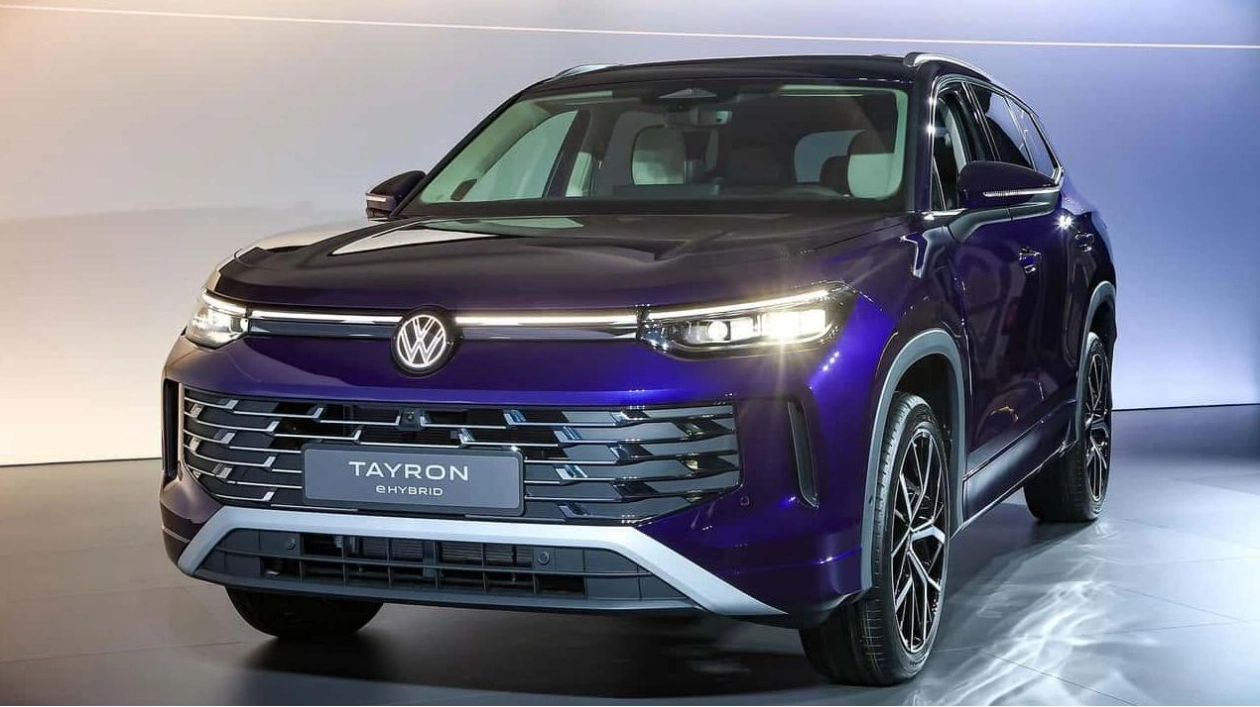[UPDATE] Volkswagen of America has confirmed that the US market will receive a long-wheelbase Tiguan, but with significant differences in its 'sheet metal, powertrain options, and equipment set.' The new US-spec Tiguan is set to debut later this year. If it doesn't mirror the Tayron, it might share more similarities with the Chinese-market Tayron L. The Tayron has been a part of Volkswagen's lineup in China since 2018 and is now making its way into Europe. Essentially, it's a seven-seat version of the latest-generation Tiguan, replacing the old Tiguan Allspace in Europe. It also serves as a preview for America's upcoming compact three-row crossover, which will retain the Tiguan name. Positioned between the Tiguan and the larger Touareg not sold in the US, the Tayron isn't exclusively a seven-seater, as it can also be configured with two rows. Think of it as Volkswagen's answer to the Skoda Kodiaq. Visually, it resembles a stretched Tiguan, which it essentially is. It measures 187.8 inches (4770 millimeters) long, 9 inches (231 millimeters) longer than the base SUV, with a wheelbase extended by 4.5 inches (114 millimeters) to 109.8 inches (2791 millimeters) to accommodate the third row. The Tayron is 72.9 inches (1852 millimeters) wide and 65.3 inches (1660 millimeters) tall, slightly larger than the Tiguan. This makes it a highly practical SUV, with cargo capacity ranging from 12.2 cubic feet (345 liters) for the third-row version to 31.2 cubic feet (885 liters) for the two-row model. Folding the second row increases the volume to 73.8 cubic feet (2,090 liters) for the two-row model and 67.2 cubic feet (1,905 liters) for the three-row configuration. Hybrid versions, however, have reduced cargo space due to the battery pack, offering 24.9 cubic feet (705 liters) with the rear seats up and 67.6 cubic feet (1,915 liters) when folded. The electrified Tayron will only be available with two rows of seats. All Tayron variants feature a dual-clutch automatic transmission, with six gears for plug-in hybrids and seven for conventional models. The PHEVs are front-wheel drive, similar to the base gas and diesel engines. The entry-level SUV is powered by a 1.5-liter turbocharged gasoline engine with 148 horsepower and 184 pound-feet (250 Newton-meters) of torque, equipped with mild-hybrid technology. A 2.0 TDI diesel engine with 148 hp and 266 lb-ft (360 Nm) is also available, along with a more powerful 2.0 TDI with all-wheel drive, delivering 201 hp and 295 lb-ft (400 Nm). The Tayron will also be offered with two 2.0 TSI gas engines, one producing 148 hp and 236 lb-ft (320 Nm), and the other with 261 hp and 295 lb-ft (400 Nm). With diesel engines losing favor in Europe post-Dieselgate, more consumers are opting for plug-in hybrids. The Tayron offers two PHEVs, one with 201 hp and another with 268 hp, combining a 1.5-liter turbo gas engine with an electric motor. These PHEVs share a 19.7 kWh lithium-ion battery pack supporting 50 kW DC charging, providing over 62 miles (100 kilometers) of electric range. Combined with the gas tank, a Tayron eHybrid can travel up to 528 miles (850 kilometers). Inside, the Tayron features a massive 15-inch touchscreen, a 10.25-inch digital instrument cluster, and illuminated touch sliders for temperature control and audio volume. Traditional buttons are scarce, but the SUV includes ventilated and massaging front seats, a windscreen head-up display, a Harman Kardon sound system, and 30-color ambient lighting. Built in Wolfsburg, Germany, the Tayron will go on sale in Europe this fall in Life, Elegance, and R-Line trims. No details are available yet about its Tiguan counterpart for the US, but it's expected to arrive next year. The Tayron will be showcased at the 2024 Paris Motor Show in a few days.

Text: Lara Palmer
09.10.2024
New US-spec Tiguan to debut with significant differences in design and features.





